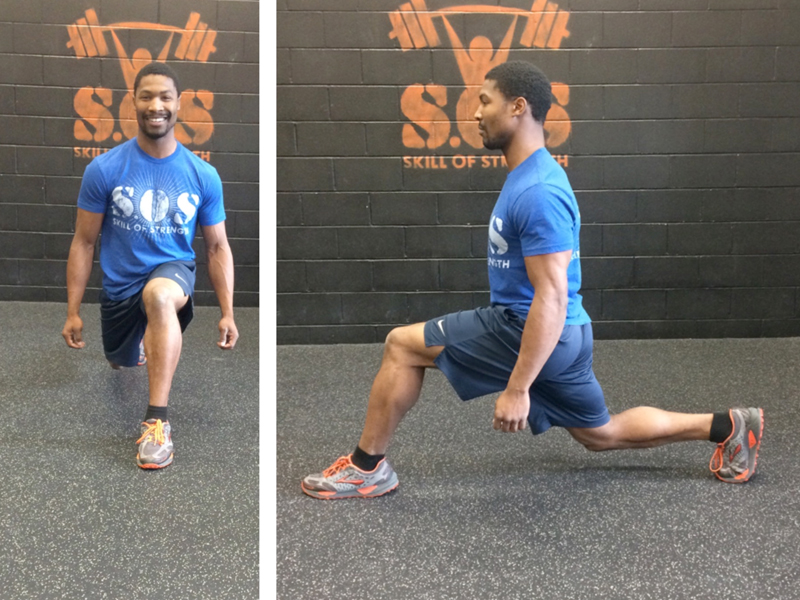For the most part, my training is pretty boring. It’s simple, basic and principle-based. Very rarely will you see me inventing “new exercises that crush your delts” or “5 new ways to increase your internal hip rotation and stabilize your fibular head AT THE SAME TIME!”
It’s not that I don’t like new things or that I would ever bash creativity, it’s that I’m trying to simplify my programming, not increase the complexity. However, there are some times that I’ll add in a drill or exercise and say to myself “ yup, all my guys could use more of this!
A quick definition of isometric exercise:
Isometric exercise or isometrics are a type of strength training in which the joint angle and muscle length do not change during contraction (compared to concentric or eccentric contractions, called dynamic/isotonic movements).
Isometrics are done in static positions, rather than being dynamic through a range of motion
I have dabbled with isometric exercises throughout my career. Some of these drills have been rubbish, others gold. Today I want to share the gold.
Below you’ll find three isometric exercises you should be doing.
1. Split Squat Iso
To be honest, most people dislike these. Why? They are tough, that’s why.
The beauty of this drill is that it combines hip flexion, hip extension, core stability, lower body strength, body awareness and posture all at once.
Once you can own a :60 hold on each side, you will have developed some serious starting strength.
Here are some quick teaching cues:
- Start in the half kneel position. The back hip should be slightly extended without extending your spine. The front knee should be at roughly 90 degrees with the weight being predominately in your heel.
- Keep your torso upright so your shoulders stack over your hips.
- Make sure that your front knee does not collapse inward. Keep the knee over your 3rd and 4th toe. Even cueing a little tibial varus may not be a bad idea.
- Keep the back glute tight. This will help stabilize the extended hip while promoting extension.
Here is a simple progression to start with: **both legs of course!!
You can follow this progression weekly or by training session. For a beginner, I would suggest doing split squat isometrics one time per week. For a stronger athlete, by the training session (2-3x a week).
- 4 x :15
- 5 x :15
- 6 x :15
- 4 x :20
- 5 x :20
- 6 x :20.
- 4 x :25
- 5 x :25
- 6 x :25
- 4 x :30
- 4 x :35
- 4 x :40
- 4 x :45
- 4 x :50
- 4 x :55
- 4 x :60
After progressing to 4 sets of :60 holds, move to weighted split squats. Most clients will be able to split squat 30-50 lbs in each hand for multiple sets of 5. I would say that it’s a pretty good start considering they were using iso’s for the last few weeks!
2. Chin up Iso in the Hollow Position
This is one a game changer for fighters. Talk about return on investment! Most coaches would agree that the chin up is an incredible upper body exercise. Add in the hollow position paired with an iso hold and you’ll see that it’s incredibly beneficial!
This drill is excellent to develop the upper body strength/strength endurance necessary for submissions and submission defense. This drill is excellent for developing strength in:
- Grip
- Forearms and biceps
- Lats and rhomboids
- Anterior core
Here are some quick teaching cues:
- Grasp the bar approximately shoulder width. Be sure to crush your grip!
- Perform a chin up with the bar touching at collar bone height or slightly lower.
- Flex the hips and pull your pelvis and ribcage towards one another via contracting your abdominals. You will be basically performing a posterior pelvic tilt.
- Stay fairly tense in this position, Don’t compromise technique and never work into pain.
Here is a simple progression to use:
You can follow this progression weekly or by training session. For a beginner, I would suggest one time per week. For a stronger athlete, by the training session (2-3x a week).
- 4 x :7
- 4 x :10
- 4 x :12
- 4 x :15
- 4 x: 20
- 4 x:25
- 4 x:30
3. Batwings
Dan John first introduced me to this drill. It’s simple, but very deceptive! A strong back is good for every athlete on the planet. Here he describes batwings better than I ever could!
Batwings – Reawaken Your Rhomboids
In Dan’s article, there are some good suggestions for sets and reps for batwings, but here is what has worked for me!
- 4 x :8 hold
- 4 x :10 hold
- 4 x :12 hold
- 4 x :15 hold
Once you get to 4x:15, move up in weight and start the process again.
Remember, its quality over quantity!
In Summary
Isometrics are an incredible tool and can be used for various training purposes. From beginners to advanced athletes, isometric exercises can often times fill the gap in yours and your athlete’s training programs.
I recommend training these exercises after your strength work, but before your conditioning.
Give these a try and let me know what you think!
As always, train smart and train hard!





One Comment
Comments are closed.